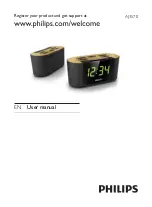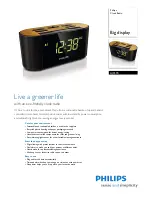
N
94
95
Glossary
The free motion of the escape wheel
*
after the escape wheel tooth has slip-
ped off the Impulse surface
*
of the pallet
*
lever. The drop is a necessary secu-
rity measure to avoid the pallets striking the escape wheel teeth.
An escapement without a pallet
*
lever but with a double wheel (locking teeth
and impulse teeth) originally used for high-quality chronometers.
An early form of the Jeweled Lever escapement
*
with pointed teeth. Here the
lifting motion only takes place on the pallets
*
. It served as a basis for the later
development of the Swiss Club-tooth Lever escapement
*
.
A component subgroup comprising the escape wheel
*
and pallet
*
lever.
The escapement transmits energy to the regulating organ that is necessary
to maintain its oscillation and at the same time hinders the Gear train
*
from
prematurely passing on its energy.
Partially ground edges or surfaces of glass or gems is known as faceting. The
faceting achieves a differentiated refraction of the optical path, thus creating
interesting views of the objects behind them.
Precise regulation
*
of the Period of oscillation
*
by adjusting the index
*
on the
escapement.
Visual refinement or decoration of high-quality movements.
A component with adjustable weights, it was used in early geared clocks with
a Verge escapement
*
as the Oscillating organ
*
.
A toothed wheel
*
in the Gear train
*
. It is positioned on the fourth pinion
*
and transmits energy from the Minute wheel
*
to the Seconds wheel pinion
*
.
At Dead center
*
, for a short moment, the balance receives an energy
impulse through the pallet
*
fork and the Impulse pallet
*
. During the resting
phase of the escape wheel, the balance can freely oscillate and there is no
mechanical connection to the Gear train
*
.
Drop
Duplex escapement
English Lever
escapement
Escapement
Faceted glass
Fine adjustment
Finishing
Foliot
Fourth wheel
Free Lever escapement
CNC
Collet
Counterweight
Crown wheel
Cycloid
Cylinder escapement
Dead center
Dial train
Discharge
Discharging pallet
Doming
Stands for »computer numeric controlled«. The manufacture of precision
movement components for your precision clock is done in our factory with the
aid of computer-controlled lathes and milling machines.
Positioned on the balance staff and secures the inner end of the balance
spring.
Thanks to the effects of gravity, the minute hand is a one-armed lever that
provides the movement with energy for the first half of every hour before
taking energy away for the second half of every hour. To prevent this, a
counterweight is positioned on the minute hand arbor underneath the dial,
moving the subgroup’s center of gravity to the rotational axis where it can no
longer exert negative effects on the timepiece’s precise rate
*
.
Using a Crown wheel as an escape wheel
*
allows the composition of simple
conical gearing. It was previously used in the Verge escapement
*
.
A geometrical curve that is created by rolling a circle on a geometrical con-
tour. The cycloid has served watchmaking well for generations in movement
toothing as the optimal contour.
The Cylinder escapement was the first frictional-rest escapement
*
and was a
great improvement over the Recoil escapements
*
commonly used before it.
However, during the complementary arc the tips of the teeth rub the cylinder,
thus preventing free oscillation.
Resting position of a balance or of a pendulum
*
.
A subgroup with two gear wheel
*
meshings
*
. It transmits the movement of
the minute hands reduced by twelve to the arbor of the hour hand. The Dial
train comprises the Quarter wheel
*
, the Minute wheel
*
, the minute pinion
*
,
and the Hour wheel
*
.
The motion of the pallet
*
lever caused by the Impulse pallet in order to release
the escape wheel
*
.
See Release arm
*
.
Cambering or curving. This is a popular method of increasing the visual
attractiveness of hands of valuable timepieces.
The hand-domed, polished, and blued hands available as extra equipment
are little masterpieces that will upgrade the dial of your Mechanica M2.
F
E
D










































